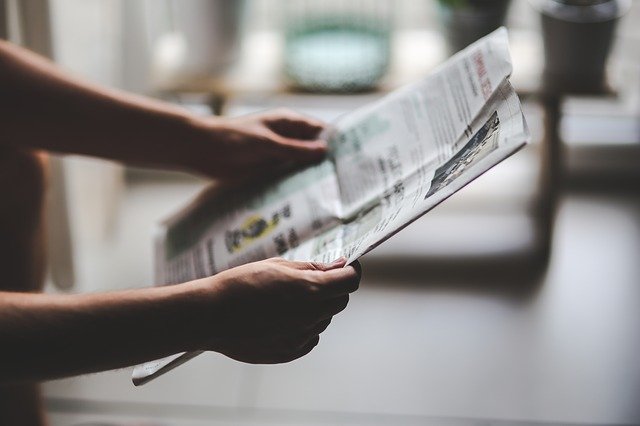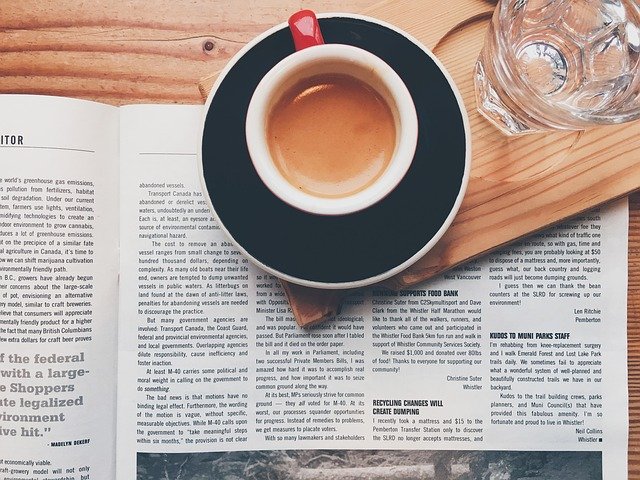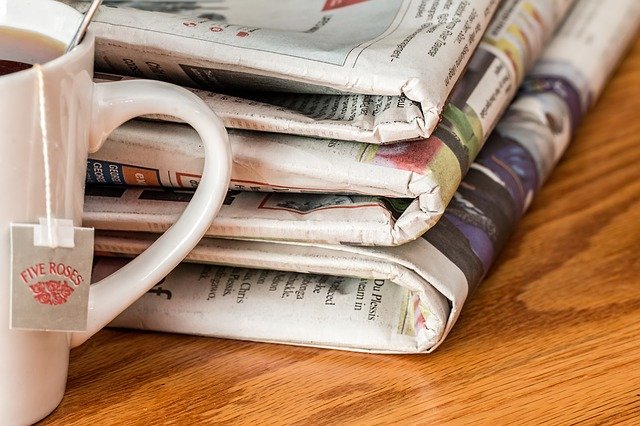Journalistic interview: what it is, characteristics, participants, structure, types, and more
Contents
What is a journalistic interview?
It is a type of dialogue that is established between two or more people, directed by the person who takes the role of the interviewer, who is mainly in charge of formulating the questions and conducting the conversation. The other people involved will be the interviewee or interviewees, who proceed to answer the questions that have been posed. In general, it is a technique used in different fields, but journalism is one of the most important.

Thus, the journalistic interview is a planned conversation in which, through questions, one gets to know about a person, fact or topic of interest in greater depth. Undoubtedly, it has been one of the most important instruments in the journalistic field due to the relevance of the information that can be accessed according to the subject to which it is applied.
Main characteristics of the journalistic interview
It is time to review a series of characteristics that allow us to identify this type of journalistic format and that are key for a good development of this type of techniques in the media. Let’s see which are the most important features:
Function of the interview
A technique such as this can be implemented for different purposes through which the knowledge of specific information is sought. In this way, the interview can be used for research processes in a given field, in the field of medicine, entertainment, culture, politics, etc.
Interview and conversation
It is important to distinguish the interview from a conventional or informal conversation. Although it is developed in this way through dialogue, it is focused, in particular, on an interest in knowledge about a specific opinion, experience or information. In this way, the dialogue develops from an interest with a previous agreement in which the expectations of either of the two parties also play an important part, also following an organized process with prepared questions in most cases.
Public nature
Another important feature of the journalistic interview has to do with the fact that it is a conversation or dialogue, according to its particulars, of a public nature due to the format in which it takes place. In this way, the dialogue that is generated can be known by a large number of people, especially those involved in the field of interest in which the interview process is managed. Many experts define it as a type of radio conversation.
Variety of formats
The journalistic interview is not only developed orally through dialogue, but can also be reproduced through other formats following the field of social communication. Thus, in addition to the oral format, it is possible to observe it in written form in different physical media such as newspapers and magazines, mainly, although it is also possible to present it on television, radio and web if it has been recorded in image and/or audio.
Preparation resources
Although we will see it in detail in the structure of the interview, it is necessary to take into account that the journalist must make use of a series of resources that allow him/her to correctly prepare the interview, the questions, the choice of the interviewee and the knowledge of the subject. In this sense, he/she can resort to archives, documents, books, magazines, newspapers, among others that provide more information about the character and the specific topic.
Other fields
The interview as an exercise of dialogue is a technique that has advanced to different spaces in which it serves mainly to communication and collection of information necessary for a process of completion. In this sense, its appearance in other fields is very frequent, for example in the labor field to participate in the candidacy for a job, for surveys, etc.
Participants in the interview
It is very important to identify those involved in the journalistic interview because it is necessary to distinguish a series of activities and positions that allow the development of this type of techniques and processes in journalism. In this sense, we identify two main parties, on the one hand the interviewee and on the other hand, the interviewee, which as we know, can be composed of one or more people.
According to this division, let’s see below what are the implications and forms of participation of the two parties:
Interviewer
The interviewer is in charge of directing the interview, which is why a large part of the process will depend on his or her activity at the moment of starting the questions to the person. It is essential that his or her participation includes correct communication through the precision of his or her words and clear diction. Ask the questions in a natural way so that the interviewee can answer them as honestly as possible and also providing a comfortable and pleasant atmosphere in which the interview runs smoothly.
As far as possible, the questions asked should be short and express exactly what you want to know so that the interviewee has the opportunity to respond in the same sense. It is essential to be confident in the formulation of the questions, which also allows the credibility of the process to the public.
Interviewee
This is the person who answers the questions, but not only this, but is selected and through the agreement the interview is gestated, which is generally driven by an interest in the particular person. In general, the interviewee may be chosen for interest in appearing in the mass media, publicity in the case of authorities or figures within the public opinion in the field of politics, entertainment, etc., for economic influence, research field, following a news item, among others.

Structure of the journalistic interview
Although some aspects of the interview may vary according to the media or the preferences of the format to be implemented, it is possible to identify a series of elements that are usually present in its development and that are key for a correct interaction. These elements are
Preparation
This is perhaps the most important stage. In this section, the person to be interviewed and the topic on which the meeting will be developed are chosen. In this case, you can initially choose the person and his interest, or the topic and accordingly look for the person involved or with the greatest possible knowledge. However, the most important thing is that the journalist is properly informed about the subject and vice versa to build a meeting in the best way for the media.
On the other hand, key aspects must be specified at this time, such as the day, place and time of the interview. It is also necessary that the interviewer also prepares a kind of draft with questions related to the topic that may or may not be present at that moment and that later will be a resource to be perfected.
Conducting the interview
At this point, after all the initial preparation, the development of the interview will be finalized, which is why both parties must be present at the agreed place and time. This process can be divided into several segments:
Beginning
It is recommended that the dialogue begins in the most natural way after the greeting. A good way to do this is to start with general aspects related to the arrival or a conversation that generates a more comfortable environment so that everything comes naturally. The interviewer at this point and throughout the interview can take notes of relevant data if desired or write down future questions in the course of the interview.
Development
In this part of the interview, in addition to the questions that may arise along the way, it is recommended to keep in mind other aspects that call the attention of the character, such as character, gestures, personality, which will allow a better writing at the time of recording the interview for the narration.
Types of journalistic interviews
It is possible to identify a great variety of types of interviews, which are formulated following different types of news, information or interest and which are later made public in response to it. This is why we can identify the following types of interview:
Profile interview
It is characterized by the fact that the interview is a very important approach to the interviewee’s biography. In this modality, the construction of the interview is based on a series of documentary sources and at the same time the testimonials from data that are obtained from the person who is asked to then make a kind of written portrait in which deep aspects about the person are exposed.
Opinion interview
As its name indicates, it is a type of interview in which the questions and, in general, the direction taken by the dialogue is oriented towards the ideals, comments and opinions of a personal nature expressed by the person being questioned. It is a dialogue formulated with the purpose of making known the ideological aspects and position in relation to a determined fact, a subject or any other situation.
Interview with a specialist
Here the questions are asked to an expert or specialist in a specific field. It is often a form of journalistic dialogue in which the information allows the implementation of a report, news or special, thus highlighting the most relevant aspects of a particular topic on which objectivity is achieved through the expression of the specialist. The interview is usually a complementary element to the judicious investigation that has been presented.
Other important types of interview depending on the medium in which they are developed are the following:
Television interview
In this format the presence of the main participants is necessary. The camera is placed on the interviewee or captures the two people and is often located in areas of high pedestrian traffic, which account for the specific fact that you want to show through television. In this case, the interviewee is usually one of those directly involved, who expresses his opinion on the event, which can be accidents, transportation problems, etc.
This type of format is characterized because it not only collects information directly from the people involved, the common people, but it is also presented in a mass media through which there is a greater reach. It serves as complementary information to the exposure of a fact that has social impact.
Live interview
The function of this modality consists of making known an extraordinary and immediate fact in which the protagonist or person directly involved can go to a radio station or in the same television format, where he/she expresses his/her opinion through a formulation of questions in relation to the fact.
In this case, the interview is composed of short, concrete answers that fit correctly with the follow-up of the information being reviewed. It goes directly to the source so that the public can access first-hand information.
Bubble
This is a format that is known in the television media mainly because it takes place in a studio with a preparation in which the interviewee goes through a series of steps to finally generate the interview. In this case, the person must go through make-up, microphone placement, indications and other preparatory acts in the studio for the interview to take place.

Keys to conduct a journalistic interview
It is time to review the key elements for the development of an interview in its different formats and that must be considered in order to conduct it correctly. These elements are:
Choosing the topic of the interview
Beforehand, the topic of the interview should be an element that the journalist has prepared. Although the focus or field may vary, it is recommended that, since it is a journalistic interview, a topic that may be of interest to the general public or to a sector of the public to which the resource will be destined should be chosen.
Questionnaire design
It is recommended that the journalist or interviewer has not only researched the topic and the person to be interviewed, but that this is also reflected in the design of the questionnaire to be used for the questions. In this sense, the questions selected should include key words in relation to the topic, show knowledge of the topic to give it greater continuity if possible, and a correct wording with non-redundant terms and concepts.
About interruptions
One of the elements that must be taken care of during an interview has to do with interruptions, since they can imply an important complication in the communicative process. For this reason, eye contact is important, since it allows determining the space for the response and dynamism. As far as possible, the interviewer should not interrupt for no reason, but may intervene to complement the interviewee’s idea or rephrase a question. Also, long periods of silence are not correct.
Organization of the information
It is necessary for the interviewee to collect and review very well all the material he/she has collected about the interview. In this case, he/she can refer to the resources implemented such as recordings, notes, videos and others. It is necessary to perform a thorough analysis of all the information, which will allow him/her to prioritize the information, highlighting from the most relevant data to those that are less relevant, in some cases complementary information.
Writing the interview
If this technique is also transmitted through the written format, it must follow a series of particularities between the title, the beginning, the body and the closing. It is usually the same structure as the writing of a report or even of a news item, although in this case it will be longer because it is based on a previous dialogue.
In this case, the journalist has two options in the writing of his interview. On the one hand, he can write it in the form of an interrogation, where the questions asked are expressed and then the interviewee’s literal answer. The second option is to do it through a literary text in which he can resort to literary resources and acquires a more fluid writing, it is an option in which the journalist can have more freedom in the writing process.
To learn more about other fields related to the journalistic text, we recommend you to visit our section dedicated to this type of texts, where you will find many other formats that are part of the media and journalism. You can also find information about the literary world and this broad art.
